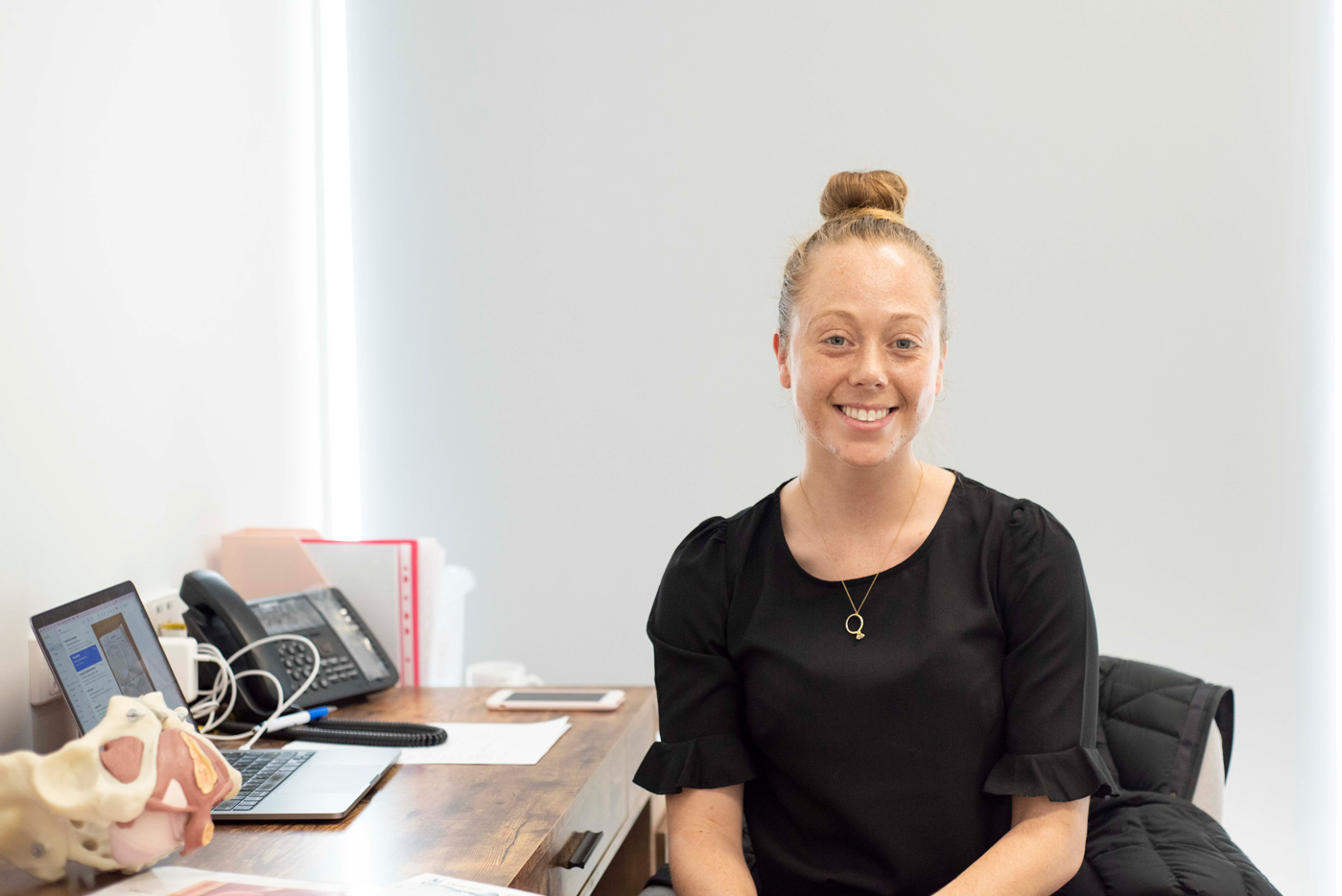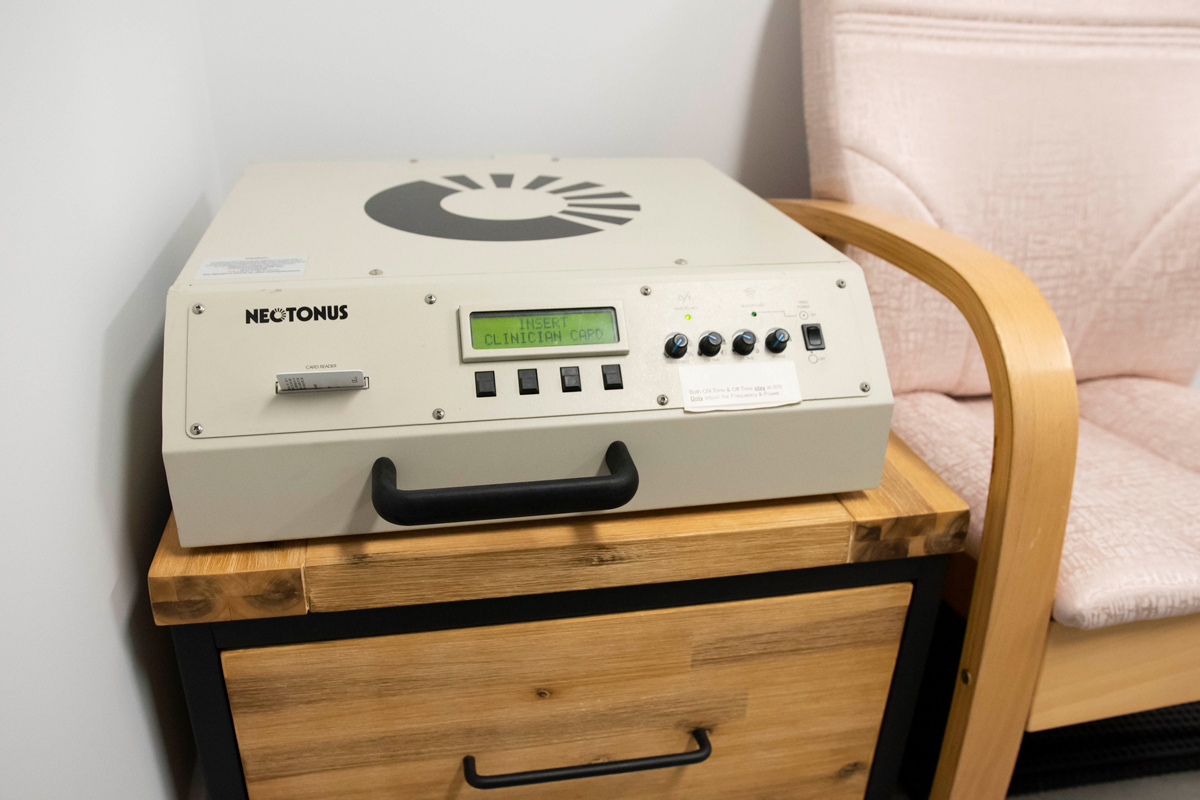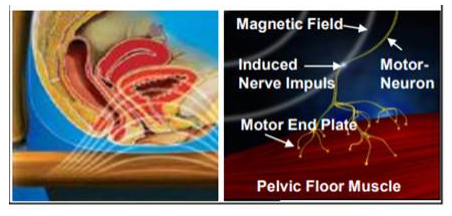
How Do I Improve My Pelvic Floor?

The pelvic floor is a collection of internal muscles that support all the pelvic organs – the bowel, bladder, uterus and vagina. It is like a trampoline that all the organs rest on. These muscles play a very important role in holding the organs in place preventing prolapse (sagging) or incontinence (leakage) of the bladder or bowel.
Like all muscles in our body, the pelvic floor muscles become weaker as we age, exacerbated by inactivity, heavy lifting, pregnancy and childbirth.
Performing regular pelvic floor exercises strengthens these muscles, providing support to prevent and treat existing prolapse or incontinence.
As the pelvic floor muscles are inside your body, you will need instruction to perform the exercises correctly. The best way to learn the exercises is to have an appointment with a qualified specialist pelvic floor physiotherapist. We are privileged at Create Health to have Rachel Fitt as our specialist pelvic floor physiotherapist. Rachel can teach you, one on one, how to perform the exercises properly and give you advice on preventing and treating prolapse or incontinence.

Create Health pelvic floor physiotherapist – Rachel Fitt
Neotonus magnetic pelvic floor exercise chair
At Create Health we also have the Neotonus magnetic pelvic floor chair. The best way to strengthen all body muscles is to use weights. As the pelvic floor is inside our body, weights can’t be used. The Neotonus chair is an ingenious invention, using MRI grade magnets built into the specially designed chair base to contract and train the internal pelvic floor muscles. Treatment is effective, painless, non-invasive and doesn’t involve surgery.

You sit fully clothed on the Neotonus chair. The magnets in the chair base quickly change polarity, creating a magnetic field that contracts all the pelvic floor muscles, whilst you sit comfortably reading a magazine or book. You can feel your pelvic floor contracting whilst you sit comfortably on the chair. Electronic devices like mobile phones can’t be used on the chair due to the magnets. The chair does the muscle exercising for you. The chair controller box sets the magnetic wave strength and frequency, allowing changes in exercise intensity over time.
Reference image from: ExMI Technology
How long is the treatment?
The Neotonus chair treatment course is for 8 weeks, with recommendation of two treatments per week. Each session lasts 20 minutes. It is like a gym workout for the pelvic floor. The pelvic floor muscles are strengthened and will be stronger more quickly than if you perform home pelvic floor exercises alone. The 8 weeks treatment is to treat any pelvic floor weakness. Like any gym work if you don’t continue the exercises after treatment finishes the muscles will weaken. A maintenance home exercise program long term is needed, incorporating pelvic floor exercises. It is best to see physiotherapist Rachel to learn maintenance pelvic floor exercises to keep your muscles toned.
The Neotonus chair can’t be used by currently pregnant women or women who have large metal implants, e.g., a hip replacement, or by someone with a history of heart arrythmias. The chair can be used with any IUD or after pelvic floor surgery. The chair is perfect to tone your pelvic floor after childbirth. Tampons and sanitary pads can be used. A vaginal pessary can be left in during treatment.
The time taken to see results will vary for every individual. On average four months of intensive pelvic floor exercises are needed to maximise benefit. The chair course is 8 weeks, then home pelvic floor exercise training will further strengthen the muscles for the next 2 months. After this time an ongoing home maintenance training program is needed.
How this treatment can help with male incontinence
Men also have pelvic floor muscles. Prostate surgery for men can lead to bladder incontinence. Using the Neotonus chair will strengthen the pelvic floor, improving or curing any after surgery incontinence.
Other treatment options
Some people with significant vaginal prolapse or incontinence that still have symptoms after having pelvic floor muscle training can consider other specific treatments.
Prolapse can be managed with a rubber ring pessary, a ring-shaped device that sits inside the vagina to push and hold the prolapse up. The other available treatment option is surgery. Surgery can be performed vaginally or laparoscopically, or a combination of the two. The specific surgical approach is designed for each patient’s individual needs. All surgical approaches use sutures, usually dissolvable, to provide support. In the past mesh, pieces of soft permanent suture weaved together, were used to treat prolapse however due to complications for some people, mesh is now not used for vaginal prolapse surgery.
Bladder urinary incontinence can also be treated with surgery. The most common operation performed is a bladder sling procedure. A piece of material is placed around the bladder opening (urethra) and inserted behind the pubic bone. The material provides added bladder support, treating incontinence. Other incontinence procedures are also available, including injections of collagen or similar substances to support the urethra.
The doctors at Create Health are experts in all aspects of women’s health. To make an appointment to discuss your specific concerns please ring 9873 6767.
« back


 (03) 9873 6767
(03) 9873 6767  By Rachel Fitt - Pelvic Floor Physiotherapist
By Rachel Fitt - Pelvic Floor Physiotherapist